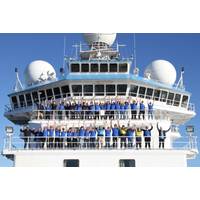
CSIRO Science Ship Takes Students on Tasmanian Circumnavigation
sink in because students can observe the ecosystem with their own eyes," Dr van der Merwe said."They can feel cold wind on their face and relate that to sea surface temperature data streaming into the ship, or experience the sun rise over the horizon and watch photosynthetically active radiation sensors detect that."Being at sea is where it all makes sense for marine science students."The voyage will immerse students in the full suite of marine science operations, from atmospheric and oceanographic studies to surveys of deep-sea ecosystems and marine life.Students will be involved

OPINION: Potable Water “on-the-cheap” in La Guajira, Colombia?
salt water, or simply brackish, water through solar collectors and a heat-saving ceramic-lined storage tank, where it’s heated to a boiling temperature, and then is gravity fed to another ceramic-lined storage tank, slowly to be drained on steel surfaces which are already hot from solar radiation. Then the evaporation process begins.A pilot demonstration organized by faculty and students Universidad Nacional in Bogotá produces about 40 gallons of water a day. Enough for 25 people. “Our interdisciplinary group at designed the self-sustainable plant so the community

How Japan Will Release Treated Water from the Fukushima Nuclear Plant
below regulatory limits before pumping it into the ocean from the coastal site.Water containing tritium is routinely released from nuclear plants around the world, and regulatory authorities support dealing with the Fukushima water in this way.Tritium is considered to be relatively harmless because its radiation is not energetic enough to penetrate human skin. When ingested at levels above those in the released water it can raise cancer risks, a Scientific American article said in 2014.The water disposal will take decades to complete, with ongoing filtering and dilution, alongside the planned decommissioning
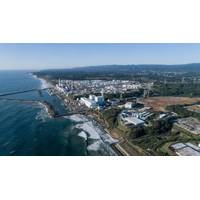
How Will the Fukushima Water Release Impact the Pacific Ocean?
, the Japanese authorities have chosen a conservative concentration limit of 1,500Bq per litre, seven times smaller than the World Health Organization’s recommended limit of 10,000Bq per litre for drinking water.Why is it acceptable to release tritium into the ocean?One surprising thing about radiation is how common it is. Almost everything is radioactive to some degree, including air, water, plants, basements and granite benchtops. Even a long-haul airline flight supplies a few chest X-rays worth of radiation to everyone on board.In the case of tritium, natural processes in the atmosphere generate
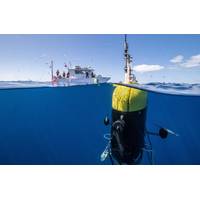
The Ocean Could Store Vast Amounts of Captured Carbon – But We Need Deep Ocean Sensors to Track the Effects
level of monitoring exist?We’re already doing much of this engineering and technology development. What we haven’t done yet is stitch it all together.For example, we have a team that works with blue light lasers for communicating in the ocean. Underwater, you can’t use electromagnetic radiation as cellphones do, because seawater is conductive. Instead, you have to use sound or light to communicate underwater.We also have an acoustics communications group that works on swarming technologies and communications between nearby vehicles. Another group works on how to dock vehicles into moorings
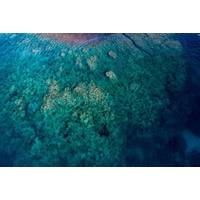
One Year After Volcanic Blast, Many of Tonga's Reefs Lie Silent
and injecting 146 million tonnes of water into the atmosphere.Water vapour can linger in the atmosphere for up to a decade, trapping heat on Earth's surface and leading to more overall warming. More atmospheric water vapour can also help deplete ozone, which shields the planet from harmful UV radiation."That one volcano increased the total amount of global water in the stratosphere by 10 percent," said Paul Newman, chief scientist for earth sciences at NASA's Goddard Space Flight Center. "We're only now beginning to see the impact of that."(Reuters - Reporting by Gloria
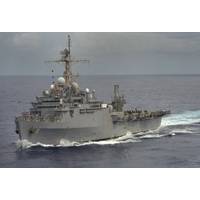
Ex-USS Denver Served Until Sunk
of Exercise Rim of the Pacific (RIMPAC) 2022. VMFA-232 coordinated the strike against the environmentally clean, decommissioned naval vessel in cooperation with the U.S. Navy and the U.S. Air Force. During SINKEX execution, four U.S. Marine Corps F/A-18 Hornets from VMFA-232 also fired High-Speed Anti-Radiation Missiles (HARM), followed by a Harpoon (AGM-84), and JDAMs. The F/A-18 is unique within the U.S. Marine Corps for its ability to employ a diverse array of air-to-surface and air-to-air weapons.”“From the land, the Japanese Ground Self-Defense Force and U.S. Army shot Type 12 surface-to-ship
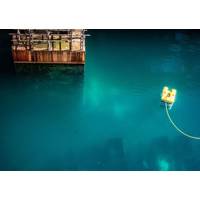
Nuclear-proof: ROV Spends Five Years Working in Nuclear Storage Ponds
;s innovation team says: "The Tiger-N has improved the amount of work we can do in the ponds in a day — sometimes doing 10 times what we’ve managed in the past. The Tiger’s reliability also means that the people using and maintaining them are getting less exposure to radiation.” Credit: Saab SeaeyeTo limit radiation dose risk to operators and maintainers, in an environment that is highly hazardous to humans, the Tiger was adapted to ensure systems and materials would survive extreme corrosion to limit exposure time spent on maintenance and cleaning, Saab Seaeye
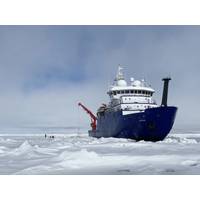
UAF’s GINA Provides a Guiding Hand in Arctic Ocean Research
;And that's the purpose of this tool: to allow us to maintain situational awareness for scientists and for driving the ship.”Photo credit: Seth Danielson, chief scientistHow it worksSatellite imagery is acquired by two fundamental types of sensors: passive and active.Passive sensors monitor radiation in specific wavelengths continually emitted from the Earth, either at the surface or from the atmosphere.Active sensors such as synthetic aperture radar emit signals that travel through clouds, bounce off the Earth’s surface and return to the sensor.Data from each type of sensor can be processed


 February 2025
February 2025





